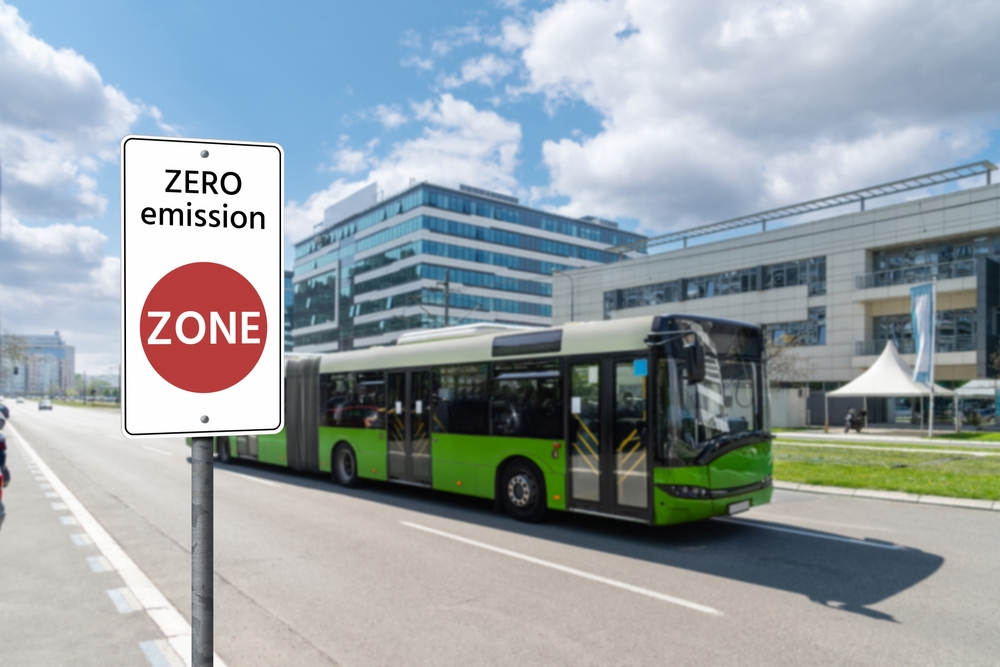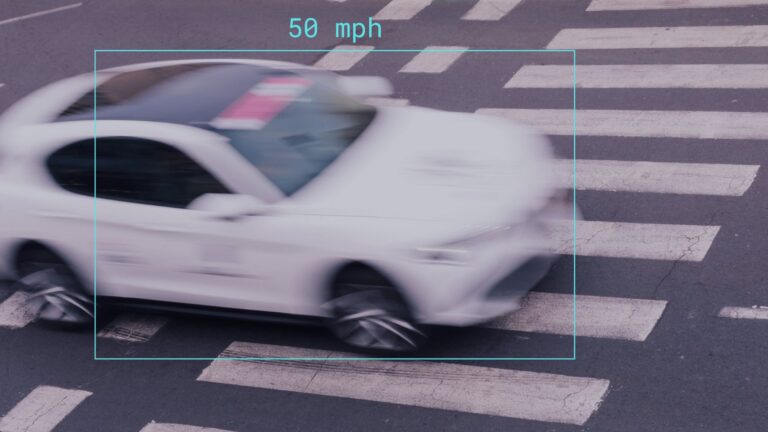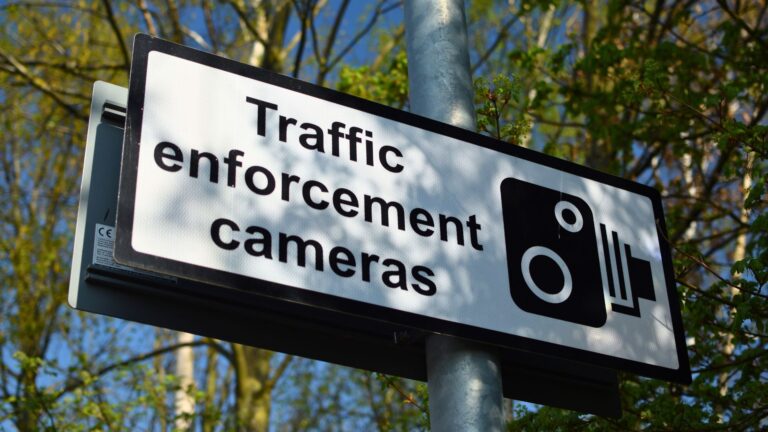Zero Emission Zones (ZEZ) and Low Emission Zones (LOZ), although at this point only enforced in Europe and Asia, have lately been a huge topic of discussion throughout the media. Many misconceptions exist and ZEZ are often critiqued for impacting social equity, making them a controversial approach to reducing pollution and improving air quality in congested urban areas. What are the laws around zero emission zones and especially ZEZ enforcement? How effective are they really? And are they putting demographics who cannot afford electric and hybrid vehicles at a disadvantage or are they, on the contrary, improving the quality of life for those who rely on public transport and bicycles?
Europa and Asia set the pace for ZEZ, ULEZ and ZEZ-F
Zero and Ultra-Low Emission Zones have already been established in large cities such as London, Oxford, Oslo, Paris, Berlin, and Rotterdam as well as Shenzen, with more European and Asian locations such as Copenhagen, Bergen, Foshan in China, and Kevadia in India are in the planning stages. Most of the areas that already have low-emission zones have plans to make them into ZEZ in the short or medium term. The extent of these already existing zones varies though, like the pilot in London Beech Street, for example, only encompasses a 360-meter-long stretch but applies to all vehicles 24 hrs/ 7 days per week. Rotterdam implemented a ZEZ-F(freight), covering a 1.6-kilometer street, which applies only to trucks of 3.5 tons and more. Shenzen launched a ZEZ-F pilot in July 2018, applying to a 22 square kilometer area (1.1 percent of the total city space) and to light-duty trucks with less than 4.5 tons weight, operating 24/7.
ZEZ Fines and Enforcement Vary Greatly
Imposed fines also vary greatly: Vehicles violating the ZEZ-F in Shenzen are being charged CNY 300 (US$45) and receive 3 points in the Chinese 12-point system that suspends licenses temporarily when 12 points are accumulated. London’s nearly-zero-emissions street allows only vehicles that emit a maximum of 75 g CO2/km, with a zero-emission range of at least 20 miles. Violators may get fined with up to £130 (US$ 180). The ZEZ-F in Rotterdam is being enforced with an automated camera system, with a penalty of €95 (US$ 70) plus €9 administration fee.
Oslo has set the ambitious goal of becoming Europe’s first “wholly emission-free city” by 2030, which would mean a reduction of 95% of emissions when compared to 2019. The planned ZEZ would encompass the city’s Car-Free City Life area, where pedestrians and cyclists take precedence over private cars and which will operate 24 hrs, 365 days a year. Only zero-emission vehicles will be allowed in the area, starting with light-duty vehicles, and late expanding to heavy-duty vehicles, with fines not specified yet, and either enforced by police or Automatic License Plate recognition (ALPR) cameras.
California has the US’ only Voluntary ZEZ to Date
The U.S. currently does not have any enforced ZEZ, and if any such programs were being planned, the legal basis needed to be developed first. However, currently Santa Monica in California runs a voluntary ZEZ-pilot that was developed in 2021 and is locally referred to as a “zero emission delivery zone” – covering an area of 2.5 kilometer in the commercial city center. Delivery partners like IKEA, Shopify, REEF technologies, and technology partners such as Nissan and Automotus work together to test new technologies such as sidewalk robots to manage deliveries while reducing emissions.
As much as the pilots all around the globe vary, they all have the same goal: to reduce GHG emissions and pollution and create benefits for their local communities, reduce noise and congestion, and improve air quality and safety, especially for pedestrians and cyclists. Areas with ZEZ or ULEZ typically also put a stronger focus on public transport, conducted by zero-emissions busses. Studies so far show convincing evidence for these initiatives being effective:
London’s Ultra-Low Emission Zone (ULEZ):
- After its implementation, nitrogen dioxide (NO₂) concentrations decreased by 44% in the zone within a year.1
- Between 2016 and 2020, harmful nitrogen oxide (NOx) emissions dropped by 36%, and particulate matter (PM2.5) decreased by 27%
Amsterdam’s Zero Emission Zone for Trucks:
- Is expected to cut 30% of transport-related CO₂ emissions by 2030.
- Targeting heavy-duty trucks, as they are responsible for a significant percentage of transport emissions
Shenzhen, China:
- In the city’s 10 zero-emission zones covering 22 square kilometers, the program resulted in a noticeable drop in air pollution levels in high-traffic areas.
- The zones were expanded in 2023 to include more urban districts. The city has seen improvements in air quality, with average PM2.5 levels now at 16 micrograms per cubic meter, making it one of China’s cleanest cities.
European Context:
Cities like Oslo and Oxford have also seen improvements in air quality. For example, in Oxford’s ZEZ, CO₂ emissions are expected to fall by 40% after full implementation.
Global Impact on Public Health:
Studies estimate that ZEZs overall can reduce urban traffic emissions by 15% to 30%2, directly improving air quality and lowering respiratory-related illnesses.
Despite having proven to be effective, ZEZ and UZEZ often face push-back from the public. Critics argue that these zones may disproportionately affect lower-income individuals who cannot afford newer zero-emission vehicles, thus raising concerns about social equity.
Zero and Low Emission Zones Go Hand-In-Hand with Public Transport Improvement
However, many cities implementing ZEZs are simultaneously upgrading their public transport systems to make them cleaner and more accessible for everyone. For example, London invested in electric and hybrid buses, with over 4,000 low-emission buses in operation. By 2037, the entire fleet is expected to be zero-emission. These measures improve air quality for all Londoners, but especially those in lower-income areas who are more likely to rely on public transportation and are more exposed to pollution. Data shows that these improvements could prevent 400 premature deaths annually due to air pollution-related illnesses.
Amsterdam has invested heavily in cycling infrastructure and clean air initiatives in its ZEZ. The city has over 500 kilometres of bike lanes and continues to expand them to encourage more people to cycle instead of driving. As a result, the shift to cleaner air from reduced traffic emissions creates a healthier, safer environment for pedestrians and cyclists.
To ensure that ZEZs do not disproportionately affect low-income residents, many cities also offer subsidies or financial incentives for switching to zero-emission vehicles. Paris offered grants of up to €6,000 3(US$ 6,700) to help residents purchase electric or hybrid vehicles. In addition, the city provides incentives to trade in older, more polluting cars for cleaner models or access to shared electric vehicles.
Enhancing the Quality of Life in Low-Income Neighbourhoods
In many cities to date, ZEZ only affect freight vehicles, not private vehicle owners and commuters. They not only drive the adoption of cleaner vehicles but can even enhance social equity by improving public transportation, pedestrian safety, and air quality, especially in lower-income neighborhoods. Additionally, initiatives like subsidies for electric vehicles, electrification of public transit, and increased investments in cycling infrastructure help ensure that the benefits of ZEZs are accessible to all residents, not just those who can afford newer vehicles. These efforts dispel the idea that ZEZs harm lower-income groups, proving they can enhance the quality of life for everyone.
1 Zero-emission Zones Can Help Cities Fight Pollution | World Resources Institute (wri.org)
2 Zero emissions areas: Why aren’t they everywhere? | World Economic Forum (weforum.org)
3 Zero Emission Zones for Freight: Lessons from Shenzhen and Shanghai






